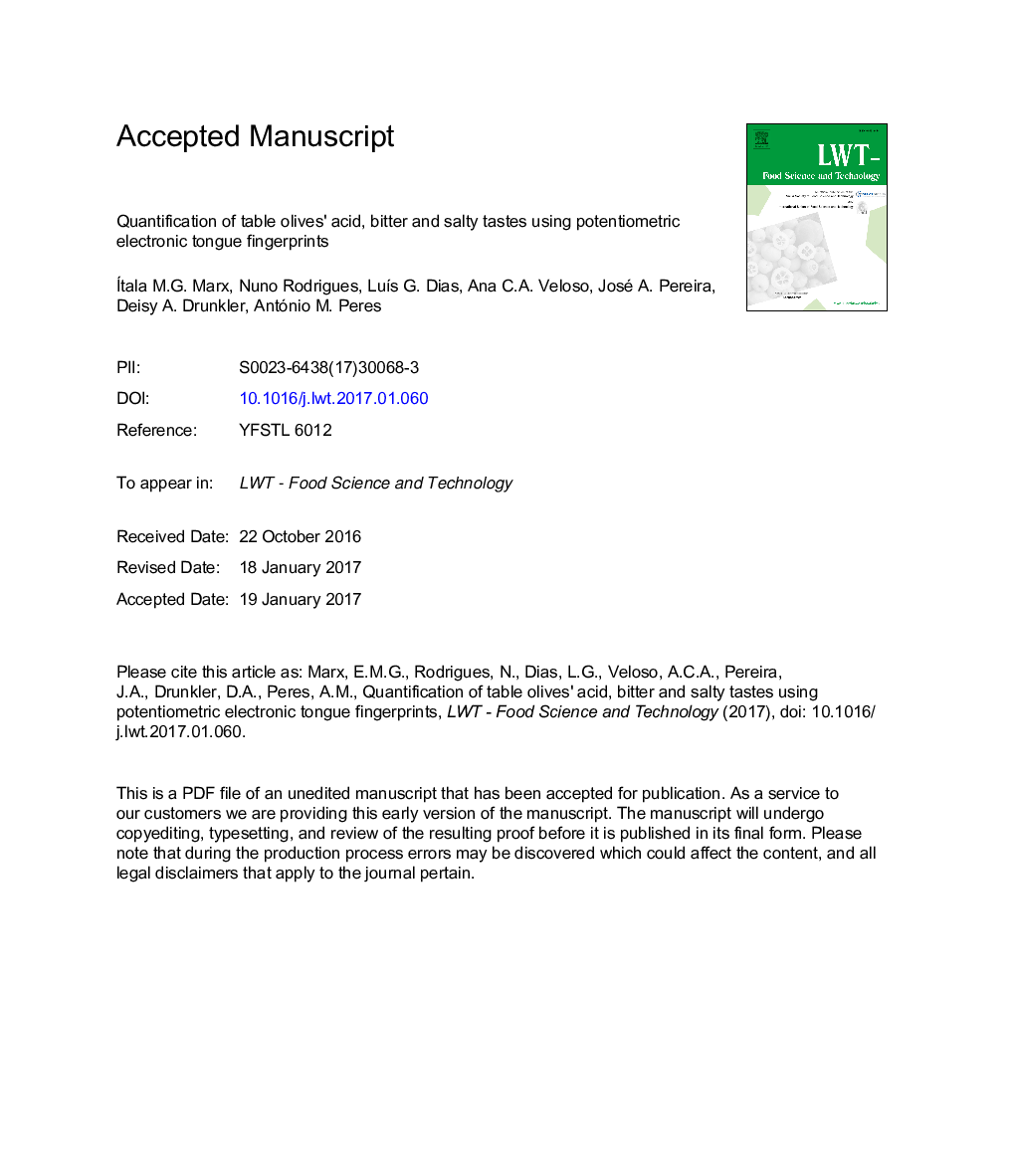| Article ID | Journal | Published Year | Pages | File Type |
|---|---|---|---|---|
| 5768786 | LWT - Food Science and Technology | 2017 | 26 Pages |
Abstract
The intensities of the gustatory attributes of table olives is one of the sensory set of parameters evaluated by trained sensory panels accordingly to the recommendations of the International Olive Council. However this is an expensive and time-consuming process that only allows the evaluation of a limited number of samples per day. So, an electronic tongue coupled with multivariate statistical tools, is proposed for assessing the median intensities of acid, bitter and salty tastes perceived in table olives. The results showed that the device, coupled with linear discriminant analysis, could be used as a taste sensor, allowing classifying aqueous standard solutions according to the three basic tastes (repeated K-fold cross-validation: 98% ± 3% of correct classifications) based on the electrochemical signals of 5 sensors. It was demonstrated that the taste sensor with multiple linear regression models, enabled quantifying the median intensities of the three basic tastes (repeated K-fold cross-validation: R2 â¥Â 0.96 ± 0.04) perceived in table olives by a trained sensory panel, based on the potentiometric fingerprints (21-25 signal profiles) of aqueous olive pastes and brines. The overall satisfactory results showed the electronic tongue potential to assess the intensities of gustatory attributes of table olives, formerly only achievable by sensory panels.
Related Topics
Life Sciences
Agricultural and Biological Sciences
Food Science
Authors
Ítala M.G. Marx, Nuno Rodrigues, LuÃs G. Dias, Ana C.A. Veloso, José A. Pereira, Deisy A. Drunkler, António M. Peres,
